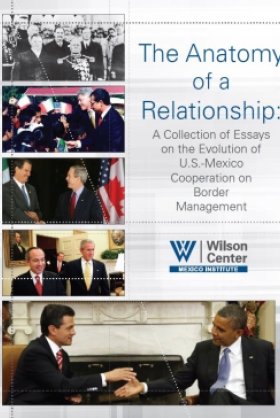An Overview of U.S.-Mexico Border Relations


Since the mid-19th century, the U.S.-Mexico border has been many things to many people: a frontier, a scar, a line, a liability, a threat, and an opportunity. Depending on one’s vantage and frame of reference, the border is any or all of these at once. Perhaps above all, the border is emblematic of the U.S.-Mexico relationship, which has changed dramatically over the span of more than a century and a half. This essay provides an analysis of the evolution of U.S.-Mexico border relations, with a broad overview that divides the history of the relationship into five distinct periods corresponding to different modes of interaction seen in borderlands throughout the world.
The above text is an excerpt from the essay. This essay is part three of our series "The Anatomy of a Relationship: A Collection of Essays on the Evolution of U.S.-Mexico Cooperation on Border Management."
Author

Professor and Graduate Director, Department of Political Science and International Relations, University of San Diego; Director, "Justice in Mexico" Project

Mexico Institute
The Mexico Institute seeks to improve understanding, communication, and cooperation between Mexico and the United States by promoting original research, encouraging public discussion, and proposing policy options for enhancing the bilateral relationship. A binational Advisory Board, chaired by Luis Téllez and Earl Anthony Wayne, oversees the work of the Mexico Institute. Read more



